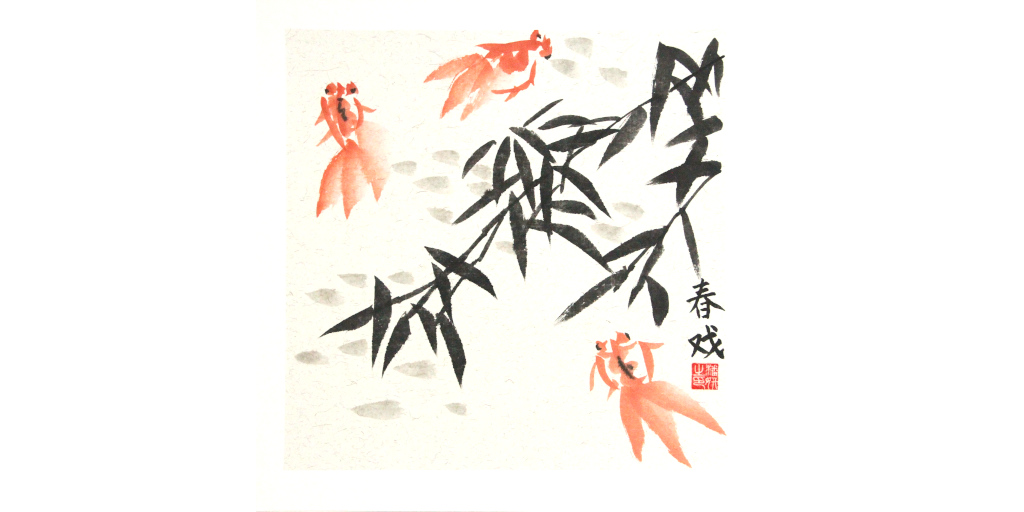
Traditional Chinese Painting – Fish
Background
Perhaps proceeding the better known “Flower and Bird” scenes in Chinese traditional painting practices, drawings of fish acting as a precursor to this better known cultural art have been found in various historical finds in China dating back to the neolithic periods.
From paintings and carvings to jade pots and porcelains in the long history of Chinese culture have been found with various types of fish artwork.
In human history fish and fishing have an intimate connection as an important food source that connected ancient peoples to the land and sea and helped us flourish, in some historical texts fishing and proximity to bodies of water and shorelines have been identified with the migration of people from the great continent of Africa to the far reaches we have stretched to now.
Reflecting the world that they were so closely connected through the medium of art ancient peoples of Chinese culture better connected to perhaps what could be called “Sea and Fish” rather than “Flower and Bird” as more intimately connecting them to the natural world.
Though traditional Chinese Arts came much later than these neolithic times, the carving of character and the reflection of the natural world upon paper continues this traditional expression of natural reflection.

Types of Fish in Art
It’s very nature of continue movement floating, swimming, moving in some form continually expressed through movement of tail, fin and body this is an animal that is drawn moving and of a character of movement in order to draw it upon paper.
In Chinese Art the gold fish, black ink fish, red carp and cat fish are some of the more common types of fresh water fish portrayed in painting, these fish are often used as actual reference in drawing, studying their movements in a pond of tranquil place to help guide the principal direction of stroke to better place their movement when drawing.
Of the more commonly encountered salt water fish including the popular blade fish, puffer fish their nature tends towards being more active, though saltwater and brackish water types such as perch also have more energetic character.

Drawing Fish in Chinese Painting
The typical manner of fish drawing flows through three parts; from beak to gill as the head, from the area of the gill to the apex of the body as the body and from this apex to the tail or tails as the tail.
Through this process perhaps most critical is the movement, as the flow of the body carries the movement of the fish just as much as the tail, fins and other barbels and feelers.
Depending on the fish the colour mottling and patterning will be different as will the general flow and proportions of the body of the fish.
As “Flower and Bird” in equal importance is the capture of the scene through it’s foliage and bloom of flower and spacing of wood and bark though the water scenes of the habitat of fish these are sometimes replaced with the sub aqua environment of weed, pebble, lotus flower and other leaf and natural matter.
YAN Examples of Fish painting
Vibrant lovely colour and peaceful warming nature perhaps better defines our own resident artist’s collection of fish paintings. Of gold fish variety most abundant she has chosen warm colour tones and a peaceful feel to represent her work showcased here with this selection of drafts and the circular finished piece above.
The aqueous environment is one of freedom unrestrained in dimension and in our own artists and many Chinese work the forms of fish are oft portrayed liberated from a single plane of movement instead floating and poised in all manners of movement and position.
Movement in our own paintings is perhaps best seen from the large tail, it’s shape best defining the feel of movement, in many Chinese paintings the combination of a large tail best guides the viewer to appreciate the movement of the piece – aided by various fin and barbel which extend that movement across the body which itself is drawn to capture the movement of the fish.
Typically added last in painting is the eye and the spattering of marbled dots and skin textures which add final life to the fish.
I hope you have enjoyed reading this short piece see our Arts gallery and further Arts blog for other examples and reading.

